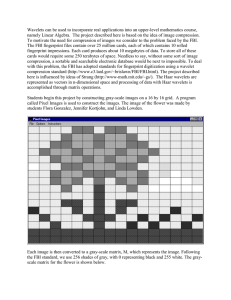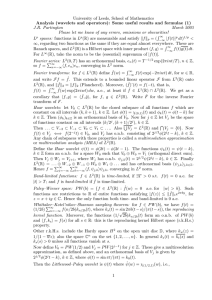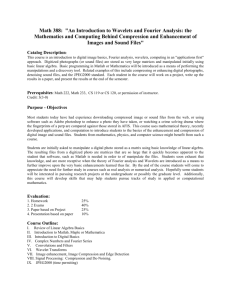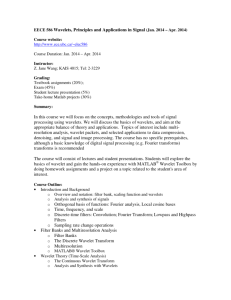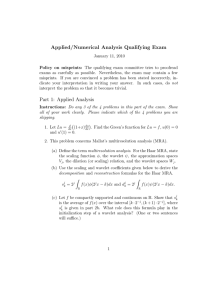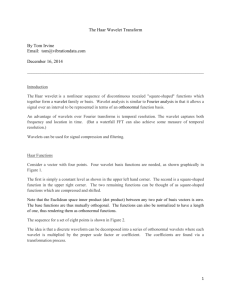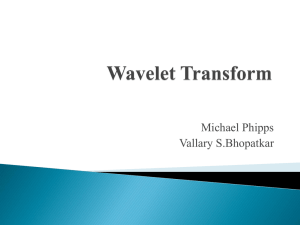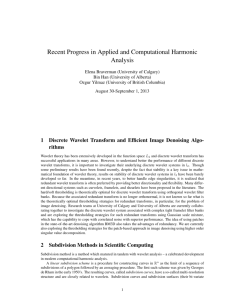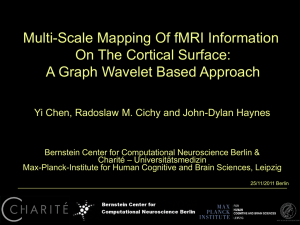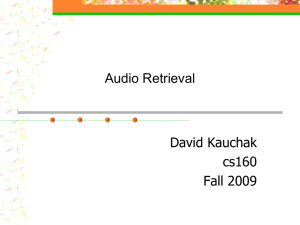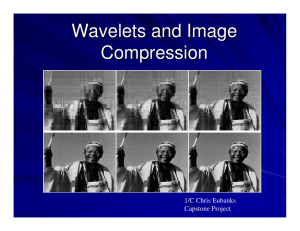Introduction
advertisement
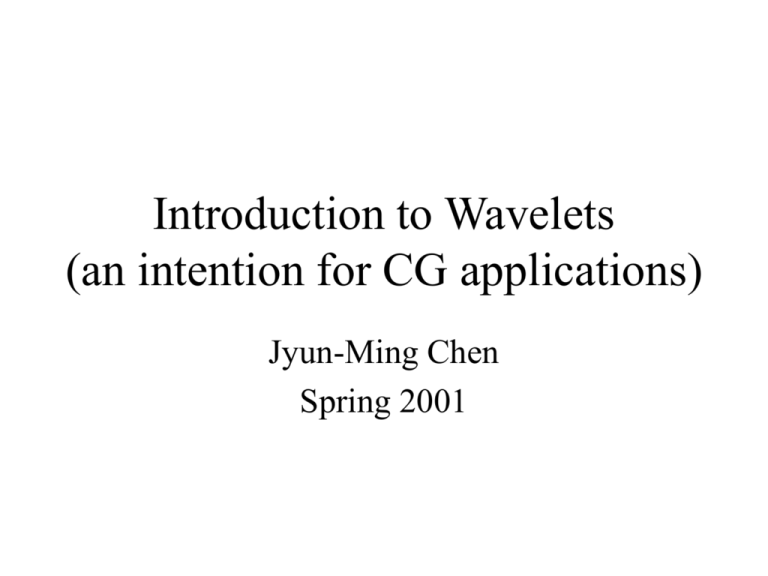
Introduction to Wavelets (an intention for CG applications) Jyun-Ming Chen Spring 2001 Contents • • • • • Motivation Haar wavelets Daubechies wavelets Subdivision and MRA Two dimensional wavelets • Other applications – Signal compression – Image compression • Relation with Fourier transform – Frequency domain thoughts Geometric Modeling • Indexedfaceset – Topology/geometry • Where the model come from: – Laser scanning (Cyberware) – www-graphics.stanford.edu/data/ – www.cc.gatech.edu/projects/large_ models/ • Sometimes produce huge model – # of triangles • Implication: – Rendering time, storage, transmission 3D Models • # of triangles: – Bunny: 750K – Budda: 9.2M – Lucy: 116M Scanning the David (M.Levoy) height of gantry: weight of gantry: 7.5 meters 800 kilograms Statistics about the scan • • • • • • 480 individually aimed scans 2 billion polygons 7,000 color images 32 gigabytes 30 nights of scanning 22 people Polygonal Simplification • Used in level of detail • Various approaches • Yet duplicated effort for storage/transmission • Wavelet seems to be a mathematically elegant tool for it What wavelet is like (approximately) • Idea similar to filter banks in signal processing General Concepts • A way of representing function in different basis such that the “effective” terms can be reduced (i.e. ignore the terms with small coefficient) – This can be potentially useful in information compression • The choice of basis is not fixed (can be designed to suit your need) – This is different from Fourier transform • The decomposition process can be applied iteratively (until a global average is obtained) After we’ve got that • • • • • recognition, synthesis, … progressive transmission multiresolution editing feature recognition … (whatever you may want to pursue) Hence, • We need to get a hold of the theory behind Yet, Wavelet is also related to signals and images • 1D: signal compression • 2D: image compression • It is therefore necessary that we cover some of these in class • Be aware. Lots of books are math intensive. I’ll try to make the course as simple as possible mathematically. Contents • 1D Haar wavelets – In great detail (with numbers) – To illustrate concepts • 2D: ways to apply Haar wavelet to image processing • B-spline basics (Farin, …) • Subdivision curve/surface • Wavelet construction (orthogonal, biorthogonal, semiorthogonal wavelets) • Lifting – 2nd generation wavelets • other wavelet topics (other: not strongly related to our main line of lecture) – Fourier transform primer – Continuous wavelet transform vs STFT – Advanced EZW – Musical sound experiment … RoadMap AP: multiresolution curve Subdivision curve B-spline basics Semiorthogonal & spline wavelet Haar Daubechies AP: signal compression MRA & orthogonal wavelets Subdivision surface & biorthogonal wavelets Two-dimensional wavelet Other Applications lifting
